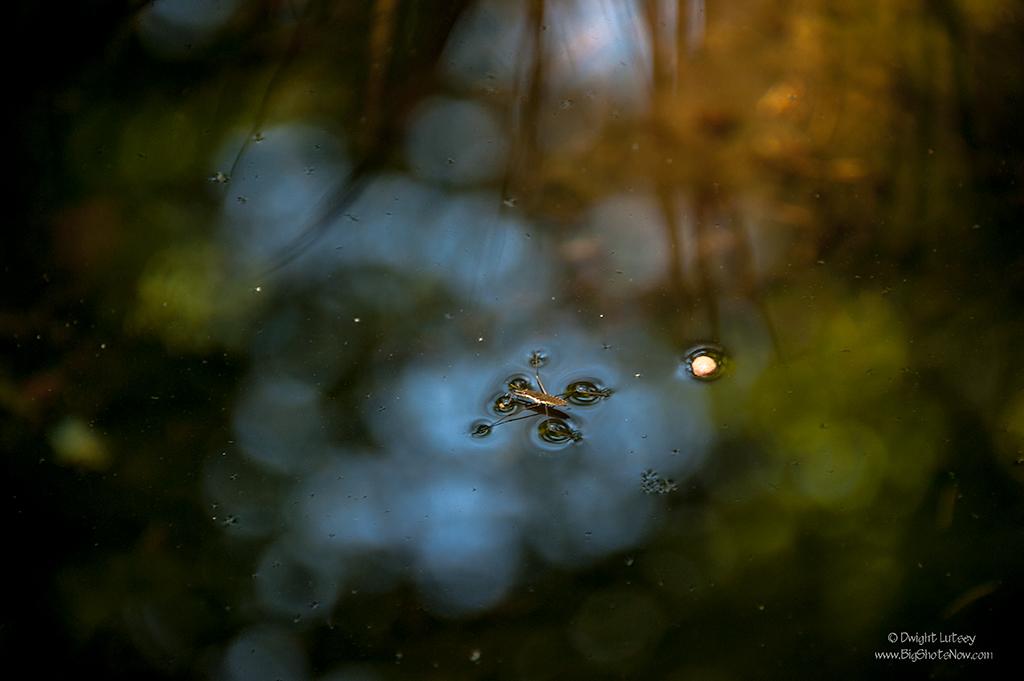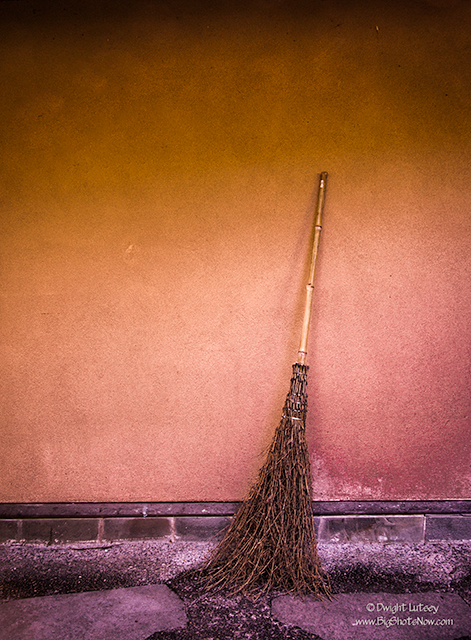In the Portland Japanese garden, way in the back, there is a path that will take you down into a ravine that has a small stream running through it. The path is made up of bluish-gray granite slabs set one above the other to form steps and curves down like a huge open air spiral staircase with no railings. As you descend further into the ravine the trees close in overhead and ferns begin to creep out next to the walkway until you’re finally standing down at the bottom in an emerald-green room that is reflected onto the surface of the small pools that form along the stream bed.
The stream is crystal clear and so are the small pools that fill the rock lined banks. It is quiet here. The sounds that are so clearly heard in other parts of the garden are muted and faint as if the little glen absorbs them. There are sounds here of course, if you sit still and listen you can hear the leaves gently rubbing together above, the stream makes a small splashing sound as it courses over the rocks, tumbling quietly, creating bubbles that float along the surface until they pop leaving the surface bare again. Leaves are carried downstream, floating majestically, swinging back and forth on the water’s surface, some staying in the middle of the stream until they float around the curve formed as the water makes it way around a larger boulder, others getting caught by the overhanging foliage until waterlogged they sink to the bottom.
Occasionally a bird will flit into the glen, rustling the leaves as it makes a quick check for something to eat, then leaves again as quickly as it arrives. Sometimes a low scurrying sound can be heard in the dry leaves as some little denizen of the garden goes about its life. As you sit and take in the slow rhythm of this little oasis you will see one of the remarkable creatures that make these smalls ponds their home. It is the Water Strider, a small insect that is so light that it can stand on the surface of the water and move about without sinking. Its feet barely cause an indent in the water surface. Sometimes it will move out to where the sun will cast its shadow into the stream bed, then you will see the water striders mirror image on the bottom, the dark shadowy rings of the indented water surrounding its feet appearing to be the size of a dime or larger. These shadows moving across the bottom of the pond were what drew my intention to it in the first place. Once seen you soon become mesmerized by its small darting movements and it is difficult to take your eyes off them. One can spend hours down here in this green wonderland.
If you love Japanese gardens, then you must place the Portland Japanese garden on your bucket list. It is truly remarkable.



You must be logged in to post a comment.